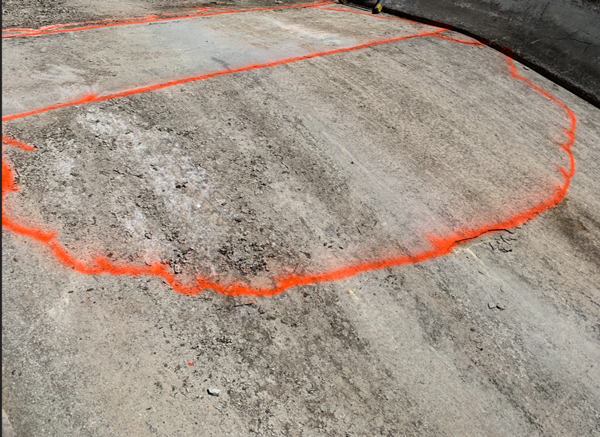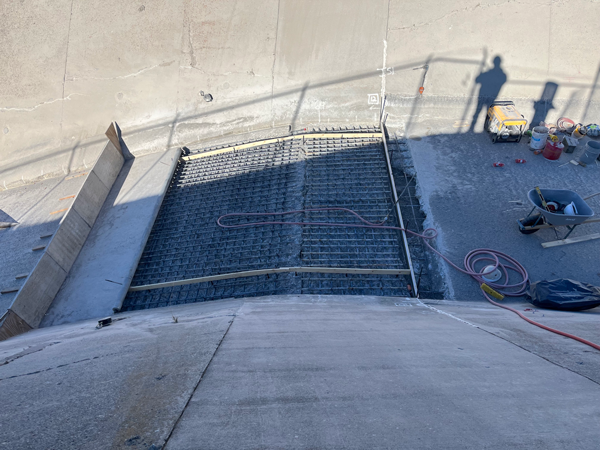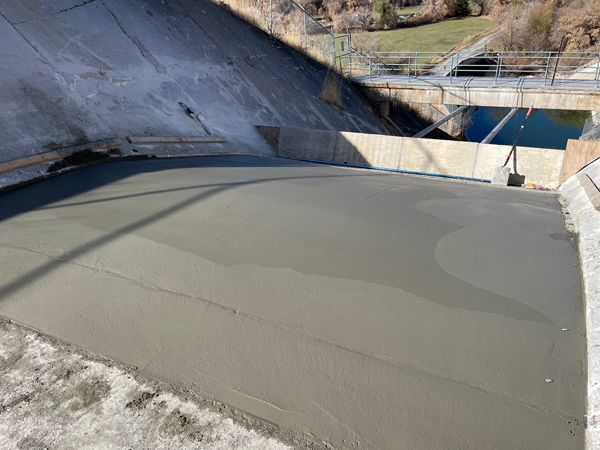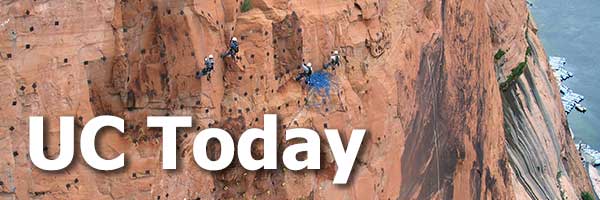 |
|
UC Today is the quarterly newsletter of the Bureau of Reclamation’s Upper Colorado Basin Region covering the states of Colorado, New Mexico, Utah and Wyoming. We look forward to sharing with you some of the projects and activities that we have been working on to manage, develop and protect water and related resources in an environmentally and economically sound manner in the interest of the American public. Fall 2023 |
|||||||||
| Upper Colorado Basin Region Office | Albuquerque Area Office Power Office | Provo Area Office |Western Colorado Area Office | Four Corners Construction Office |
|||||||||
|
from the |
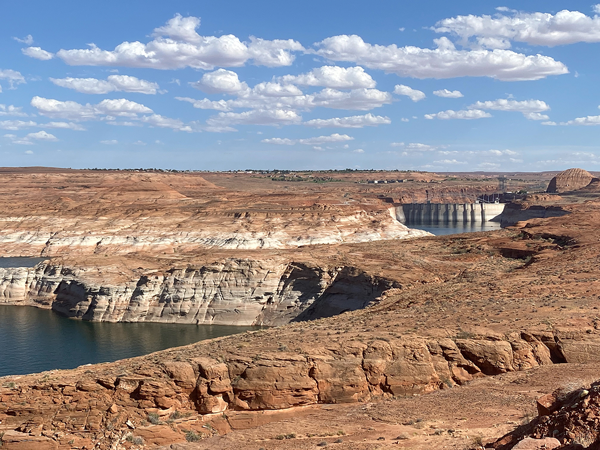 |
| View of Glen Canyon Dam and Lake Powell. Reclamation photo |
Bureau of Reclamation and Colorado River operations
|
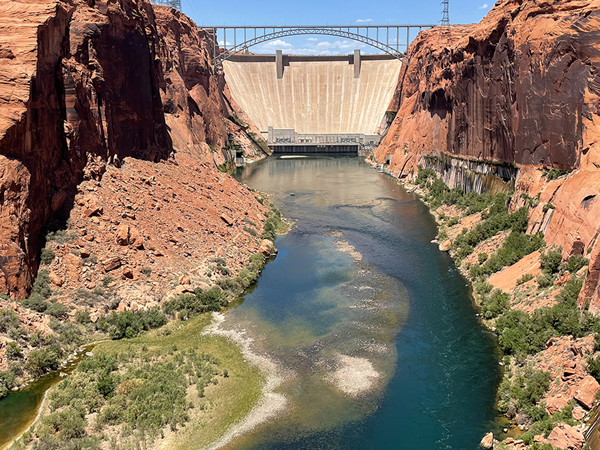 |
| Glen Canyon Dam in Page, Arizona. Reclamation photo |
Reclamation analyzing Glen Canyon Dam operations to disrupt invasive fish
|
|
from the |
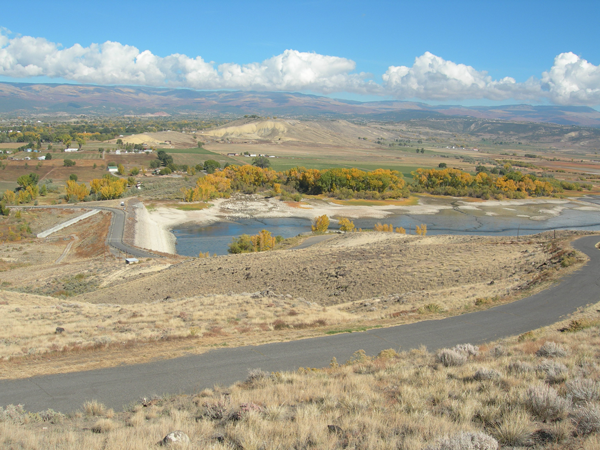 |
| Fruitgrowers Dam. Reclamation photo |
Fruitgrowers Dam gate improvement projectBy Justyn Liff, Western Colorado Public AffairsOn Oct.30, construction began to install new outlet gates and bring electrical power to the control house at Fruitgrowers Dam located near Orchard City, Colorado. 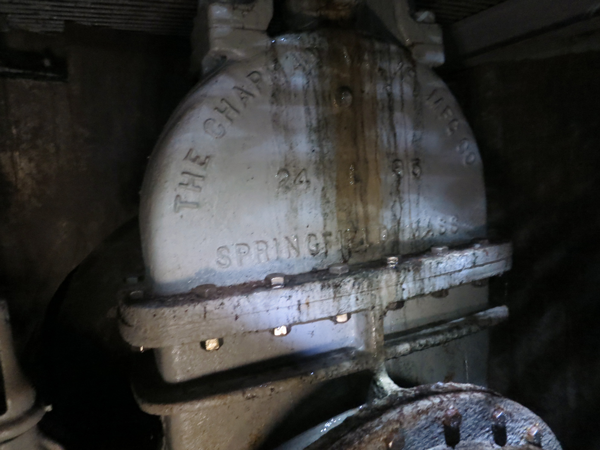 The Fruitgrowers Dam Project consists of a homogeneous earthfill dam and reservoir that provides storage for 4,540 acre-feet of water, constructed by Reclamation in 1938. This dam replaced a small, 40-year-old dam that was constructed by water users in 1898 and failed in 1937. In the wake of the small dam failure, Reclamation and the Fruitgrowers Project helped water users retain their livelihood and continue to farm fruit, small grains, corn, alfalfa, and pasture. Today the Fruitgrowers Dam Project is owned by Reclamation and operated and maintained by Orchard City Irrigation District (OCID). The existing outlet gates for Fruitgrowers Dam are past their expected service life and are manually operated. This means that the gate operator must travel to the dam to manually adjust the outflow from the reservoir, which results in operational inefficiencies as the gates cannot be continually adjusted to match downstream demand.
Before construction began, the Fruitgrowers Reservoir was drained as much as possible to facilitate the outlet gate replacement. Kissner General Contractors, Inc. was selected to construct the project with oversight from OCID and Reclamation's Western Colorado Area Office staff. Construction is expected to be completed in March 2024. For more information on the Fruitgrowers Project visit: Fruitgrowers Project (usbr.gov). |
|
from the |
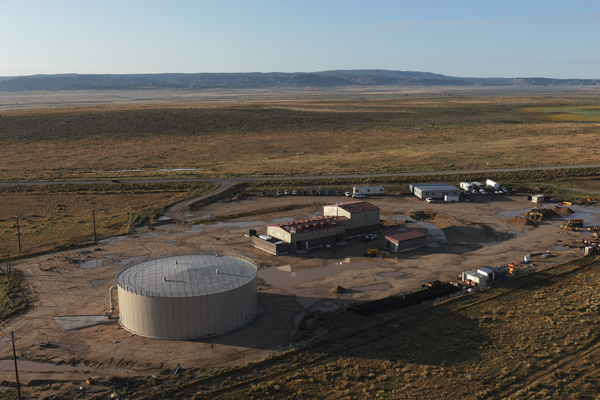 |
| An aerial look of the near finished Bahastł'ah Pumping Plant (#7). Reclamation photo |
Navajo-Gallup Water Supply Project construction updateBy Ryan Royer, Design and Commissioning Group Chief, Bureau of ReclamationThe Navajo-Gallup Water Supply Project continues marching on! The Cutter Lateral Water Treatment plant has been providing a clean, reliable source of water to the eastern checkerboard portions of the Navajo and Jicarilla Apache Nations for almost three years. The construction on the San Juan Lateral portion of the project is in full swing, and to date, approximately 285 miles of pipeline has been installed or is under contract. 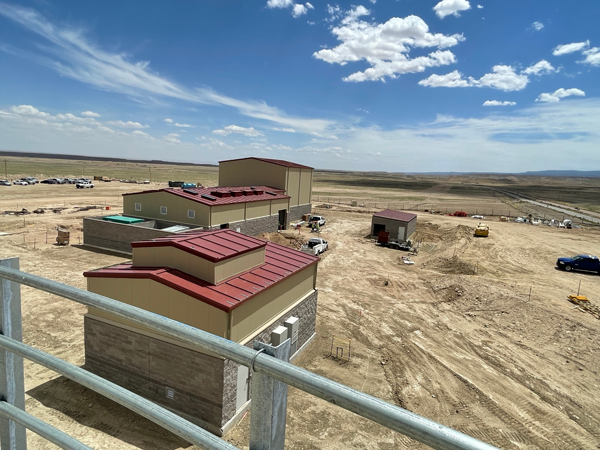 Currently, four pumping plants are under construction with Tooh Haltsooi (Pumping Plant 4) and Bahastł'ah (Pumping Plant 7) nearing completion by next spring. Tsé Da'azkání (Pumping Plant 2) and Tó Ałts'íísí (Pumping Plant 3) are under contract, and the contractor has broken ground with massive rock crushing and earth moving efforts easily visible from highway 491. Furthermore, miles upon miles of pipeline are being trenched, laid and/or pulled into its final resting place. Navajo Code Talkers Sublateral, traversing from Yah-Tah-Hey Junction west on the north side of Highway 264, has installed over 7 miles of 30" and 24" diameter pipe and multiple Horizontal Directional Drills (HDDs) under washes and through difficult terrain. One large structure under construction on Navajo Code Talkers is the Black Hat Storage Tank, which will hold 1.5 million gallons of water when completed. Reach 4a and 4b, which start just north of Tó Ałts'íísí in Sanostee Chapter, is under contract and clearing and grubbing activities are commencing. Expect to see large stockpiles of 42" diameter pipe being stored or strung out in the coming months as the contractor progresses! 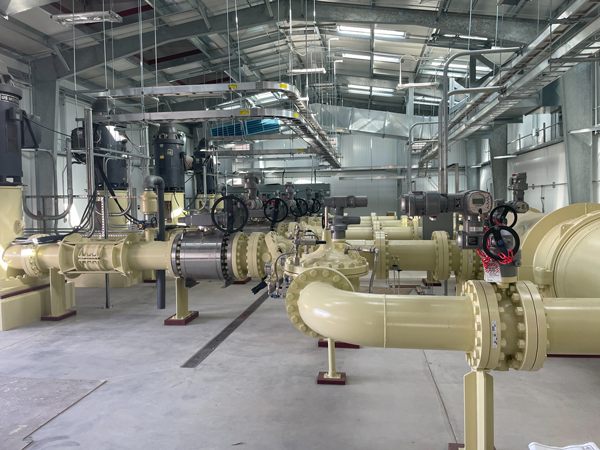 Reclamation's partners are continuing to make progress on their reaches. The Gallup Regional System is more than 75% complete and work is beginning on the latest phase on the east side of Gallup with Reach 27.7B. Indian Health Service is set to begin construction on Reaches 14.1 and 14.2 in the Churchrock and Iyanbito Chapters this fall. The Navajo Nation is nearing final design completion on the Beacon Bisti N9 Sublateral and construction is set to begin on Reach 10.1.1, the Coyote Canyon community connection, this winter. Overall, the San Juan Lateral is more than 50% complete. |
|
from the |
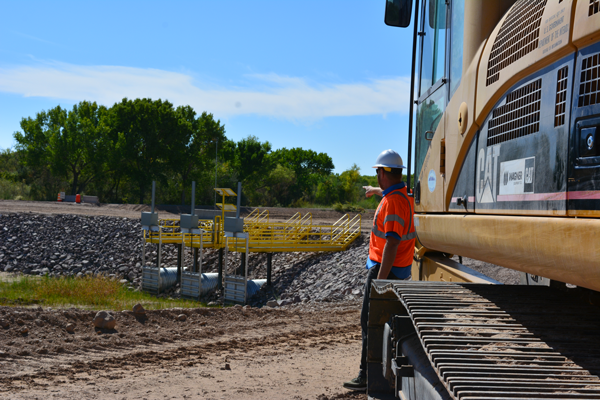 |
| Bryan Lawlis, AAO Project Management Specialist, looks over the RM60 outfall culverts. Reclamation photo |
Sedimental JourneyBy Pacifica Casares-Chehy, Albuquerque Public AffairsDid you know that the Rio Grande stands as one of the most sediment-laden rivers globally, alongside the Missouri and China's Yellow River? In an average runoff year, such as the most recent one, Elephant Butte Reservoir receives a substantial 2.5 to 5 million tons of sediment, composed mainly of sand, silt, and clay. 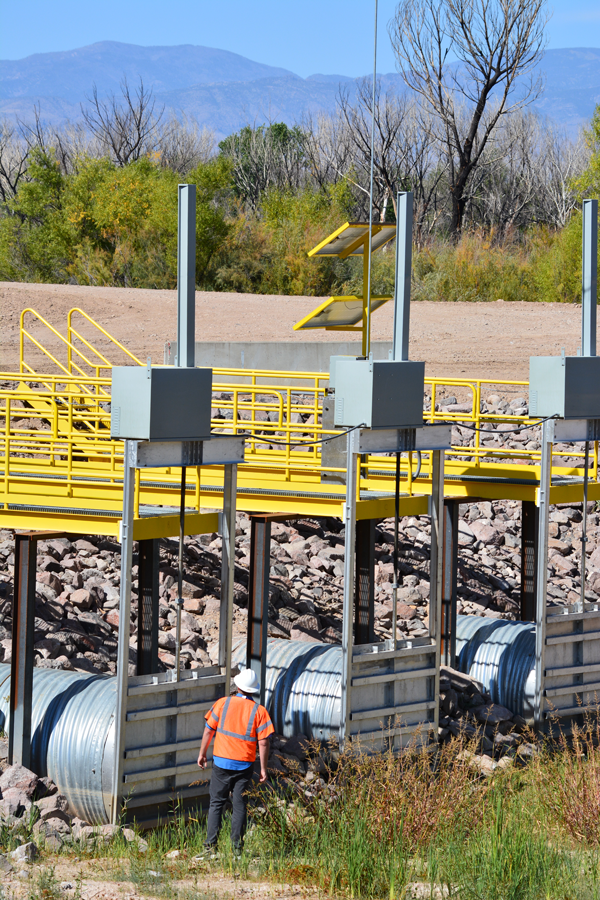 While you might be familiar with the term "sediment load" as the quantity of fine-grain sediment transported through a stream in a year, understanding why lower sediment loads are crucial in our waterways is key. The elevated sediment loads downstream of San Antonio, New Mexico, in concert with the existing levee system, contribute to significant channel aggradation, filling the riverbed with sediments. This poses a complex sediment management challenge, affecting the maintenance of an open, functional channel for downstream water delivery in the 40-mile stretch leading to the Elephant Butte Reservoir pool. Issues include sediment plugs, channel and floodplain perching above the valley, and increased water losses and waterlogging of adjacent areas along the river channel. Furthermore, this river corridor supports valuable riverine, riparian, and wetland habitats for local fish and wildlife, which can also be adversely impacted by flooding, drought, and sedimentation. 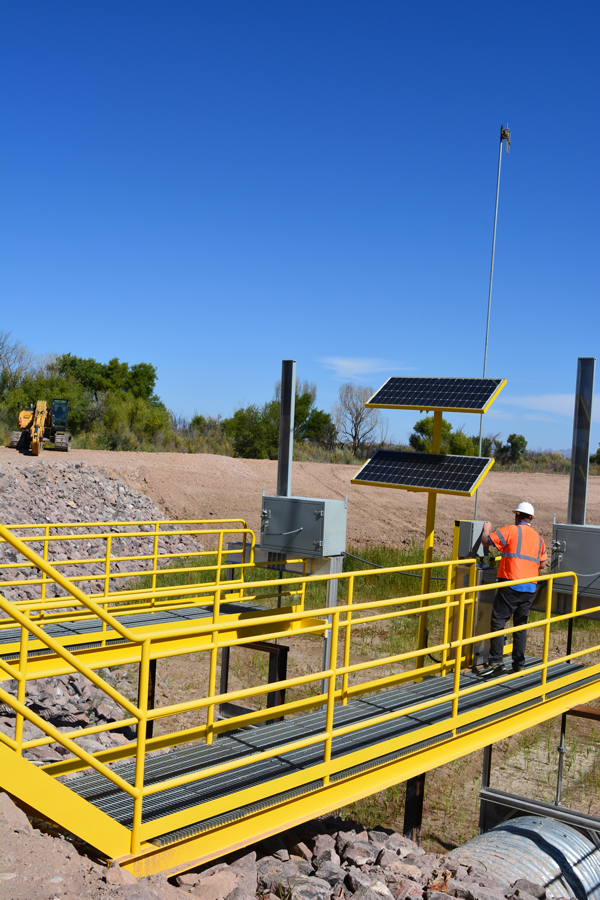 Related to these challenges, the Socorro Field Division recently completed the construction of Reclamation's River Mile 60 (RM60) Project. This initiative aims to facilitate more efficient flows from the Low Flow Conveyance Channel (LFCC) into the Rio Grande and eventually Elephant Butte reservoir. The LFCC provides valley drainage of upstream agricultural and refuge lands via irrigation return flows and groundwater seepage. Prior to this, the LFCC previously did not have a more direct outfall to the Rio Grande due to loss of connection caused by reservoir inundation and sedimentation during elevated reservoir conditions going back to the mid-1980s when the reservoir was full. This project is designed to enhance Reclamation's water delivery to Elephant Butte Reservoir, aligning with the interstate Rio Grande Compact Agreement for water allocation among Colorado, New Mexico, and Texas. Simultaneously, the RM60 Project will sustain flows to nearby habitat areas that support native plant and animal species. Following construction, a two-year period of experimental operations and adaptive management is planned. The Socorro Field Division, oversees the maintenance of 300 miles of the Rio Grande. Notably, the Socorro Field Office earned the prestigious 2023 Commissioner's Organization Award for Safety Excellence for their work on projects just like the RM60 Project. |
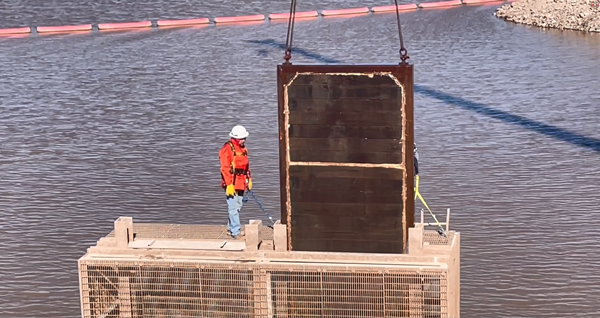 |
| Removing of the intake structure stop log gates at Caballo Dam Oct. 30, 2023. Guillermo Hernandez pictured monitoring the removal and ensuring no issues occur while crane was lifting the stop log gates out. Reclamation photo by Matthew Pedroza |
Caballo Reservoir stoplog project updateBy Pacifica Casares-Chehy, Albuquerque Public AffairsReclamation's Albuquerque Area Office Team recently executed a drawdown of Caballo Reservoir, reducing its storage capacity to approximately 6,000 acre-feet, marking the lowest level reached in mid-October. This strategic drawdown facilitated the installation of "stoplogs," wooden panels or gates with a metal frame to ensure a seamless process for their placement and thereby cutting off flows to the location for the repair. In other words, the stoplogs serve the crucial purpose of blocking water from entering the main discharge conduit to enable its comprehensive inspection. These stoplogs remained in position for 14 days.
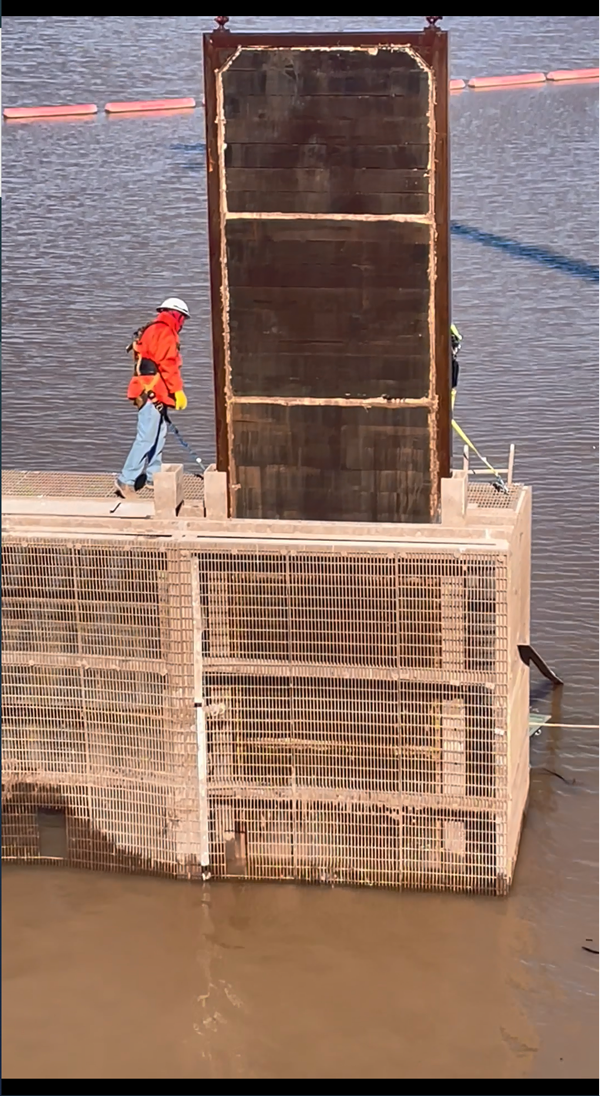 Kalminson further explained that this project marks the initial phase of a broader rehabilitation initiative for the smaller Bonita Irrigation Pipe which is essential to guarantee dam safety and the longevity of the structure, ensuring a sustainable water supply for southern New Mexico. This successful effort also underscores Reclamation's commitment to enhancing dam safety and fortifying Reclamation infrastructure in the region. Following the removal of the stoplogs, Caballo Reservoir will experience an increase in storage volume through the inflow of natural water. "Over the non-irrigation season, we get natural flows of water from rain events and from seepage from Elephant Butte Dam down river to Caballo reservoir," explained Kalminson. "It was a job well done, with exceptional coordination, resulting in the inspection of typically inaccessible features that are now thoroughly documented," said Kalminson. Reclamation maintained close coordination with the New Mexico Department of Game and Fish and New Mexico State Parks throughout this undertaking. |
|
from the |
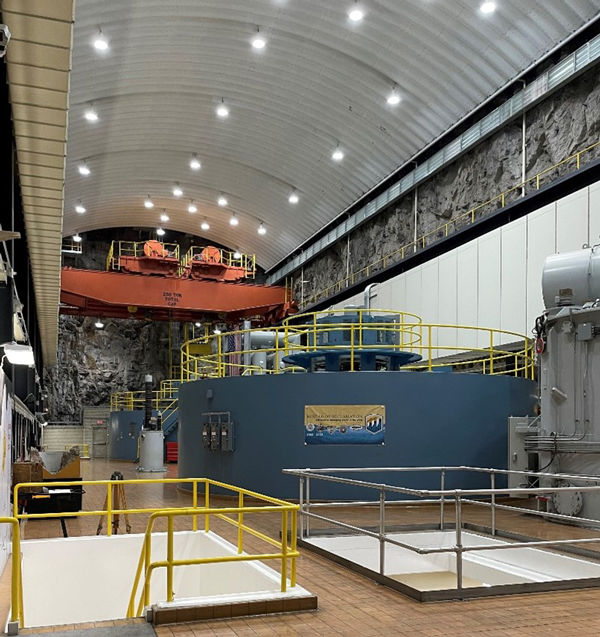 |
| The powerplant at Morrow Point Dam generated 40% more hydropower in water year 2023 compared to the previous year. The boost in hydropower generation at Morrow Point and throughout the Upper Colorado Basin can be attributed to above-average snowpack and high runoff. Reclamation photo |
Water year 2023 boosts region's hydropower generationBy Becki Bryant, Upper Colorado Basin Public AffairsThe final numbers are in, and not surprisingly, the bountiful snowpack and strong runoff in the Colorado River Basin during water year 2023 (Oct. 1, 2022, through Sept. 30, 2023) gave the region's hydropower generation a big boost. Snowpack in the Upper Colorado River Basin peaked at 161%, and the observed unregulated inflow into Lake Powell measured 10.69 million acre-feet (166% of average). This resulted in more water being sent downstream from Lake Powell to Lake Mead, as Reclamation is required to "balance the contents" of Lake Mead and Lake Powell, as outlined in the 2007 Interim Guidelines. As a result, Glen Canyon Dam's annual release volume for WY 2023 was initially set at 7.0 million acre-feet, and ended up at 8.58 maf. Releasing more water from the dam increased hydropower generation compared to the previous year. In WY 2022 (Oct. 1, 2021, through Sept. 20, 2022), hydropower production at Glen Canyon hit a record low of 2.59 million MWh, but the powerplant generated 3.27 million MWh in WY 2023. The difference is enough to power approximately 61,800 American homes for a year. Hydropower production was also up basin-wide, with all 12 powerplants in the basin – Blue Mesa, Crystal, Deer Creek, Elephant Butte, Flaming Gorge, Fontenelle, Glen Canyon, Lower and Upper Molina, McPhee, Morrow Point, and Towaoc – producing more energy in WY 2023 compared to WY 2022. The biggest gains came from McPhee Dam (423% increase), Elephant Butte (179%) and Towaoc (105%). Unfortunately, the outlook for WY 2024 is not as rosy, as Lake Powell/Glen Canyon Dam, which produces 75% of the basin's hydropower, is operating in the mid-elevation release tier, and will release 7.48 maf of water without the potential of a mid-year adjustment/balancing. |
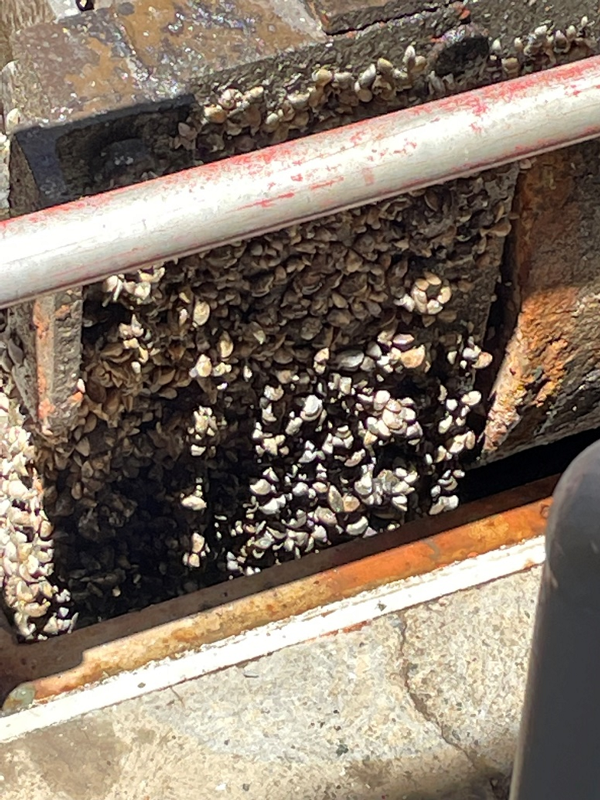 |
| Quagga mussel build up on fixed wheel gate. Reclamation photo |
Shining a Light on Quagga Mussel PreventionBy Riley Martin, Upper Colorado Basin Public AffairsGlen Canyon Implements UV technology to Preserve Our WaterwaysFor more than a decade, Glen Canyon Dam and Powerplant has grappled with the relentless invasion of Quagga mussels. The growing numbers of these troublesome creatures have forced Reclamation to employ proactive measures to combat their populations and it is a never-ending battle. 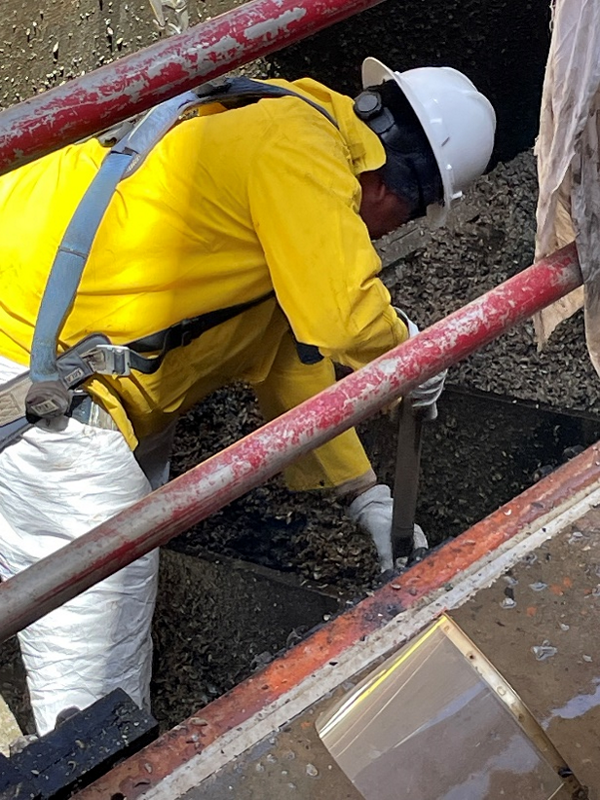 A significant factor in the aggressive spread of mussels across western waterways is the contamination of boats by veligers, the microscopic larvae responsible for their reproduction. Once veligers are introduced to a body of water, preventing population growth becomes exceedingly challenging. When Quagga mussels were first discovered in Lake Powell about 10 years ago, they were found in small numbers; today, they require shovels to be removed by the bucketfuls. If left unaddressed for an extended period, the mussels can obstruct pipes and render infrastructure inoperable. At present, Reclamation employs a variety of methods to prevent the continued population growth of these invasive mussels at our facilities, including chemical control, filtration, and the application of eco-friendly protective coatings to submerged surfaces. Additionally, mechanical measures have been employed over the last decade, with practices such as jetting, scraping, and cleaning playing a central role in keeping our infrastructure free from Quagga mussels. Unfortunately, this approach is not sustainable for long-term effectiveness, given the significant time and resources these methodologies demand. Enter UV light technology – a powerful, proven solution that's currently being installed at Glen Canyon Dam and Powerplant to combat the spread of mussels in our system. Glimpse into the UV TechnologyThis simple yet highly effective concept involves the use of specially designed "bug lights," which are reflective pipes equipped with intense UV lights. These lights create electric arcs of such intensity that they can efficiently neutralize mussel veligers. Better, faster and cheaper, UV light irradiation is a valuable tool for preventing mussel settlement because, unlike conventional treatments, it has no detrimental effects to the environment. 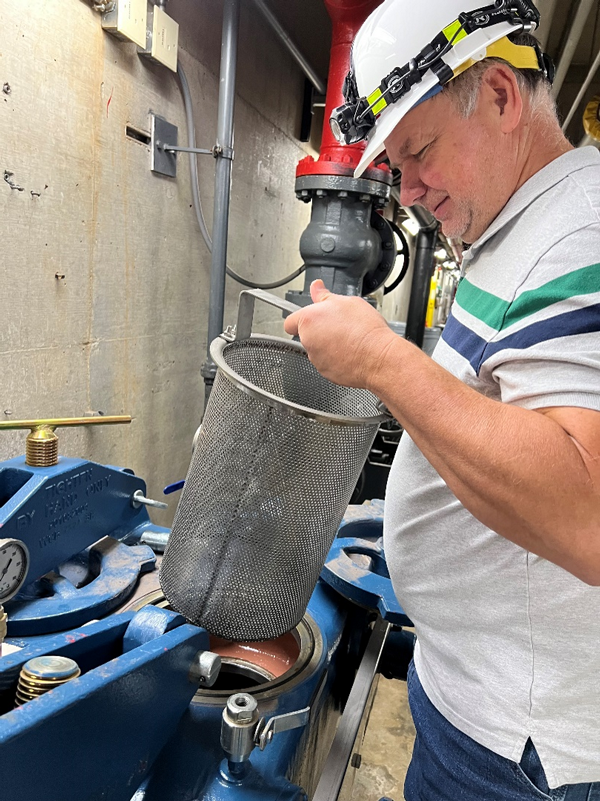 It's important to note that the UV light does not harm mature mussel; instead, it serves as a preventive measure, stopping further growth of the veligers. Reclamation facilities in the Lower Colorado Basin (LCB) have achieved notable success with this technology at Parker and Davis dams. The data collected from LCB clearly demonstrates the effectiveness of UV lights in their battle against Quagga mussels, underscoring why this technology holds promise for making a significant impact at Glen Canyon. "Initial estimates suggest that the UV lights will be around 90% effective at Glen Canyon, a substantial improvement to utilizing other methods alone and will bolster our ability to maintain our systems for the long term," said Glen Canyon mechanical engineer Ron Elder. Application: Two UV Lights for Each Generating UnitThe implementation of the UV technology involves installing two UV lights for each of Glen Canyon's eight generating units. One for the turbine bearing coolers and transformer coolers, the other for the generator coolers. The schedule includes installing two units per year, meaning that this year and the following three years will witness the installation of this UV technology. "This strategy aligns with our commitment to minimizing operational disruptions and effectively coordinates the work with our annual maintenance schedules," said Glen Canyon field division manager Gus Levy. 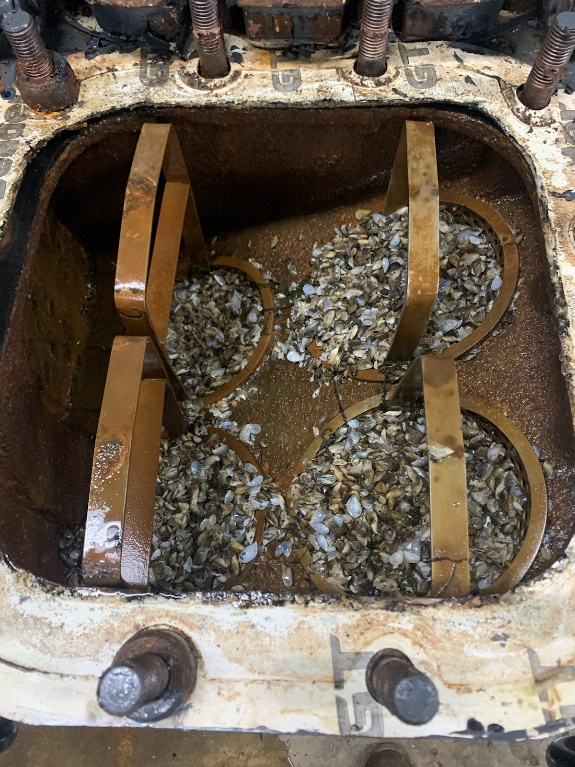 In addition to the UV lights, new filter/strainer baskets have been added to capture shell debris before it escapes downstream. This multifaceted approach aims to gradually reduce the mussel load and prevent the formation of new veligers. "We've been fortunate at Glen Canyon in that we've never experienced operational disruptions due to interference from mussels, and I want to keep that record," said Levy. "The fewer mussels we have passing through our system, the more man-hours we can allocate to other essential maintenance." The entire project is estimated to be completed by the fall of 2026, representing a significant step forward in Glen Canyon's ongoing efforts to safeguard our waterways and ensure the sustainability of our operations. |
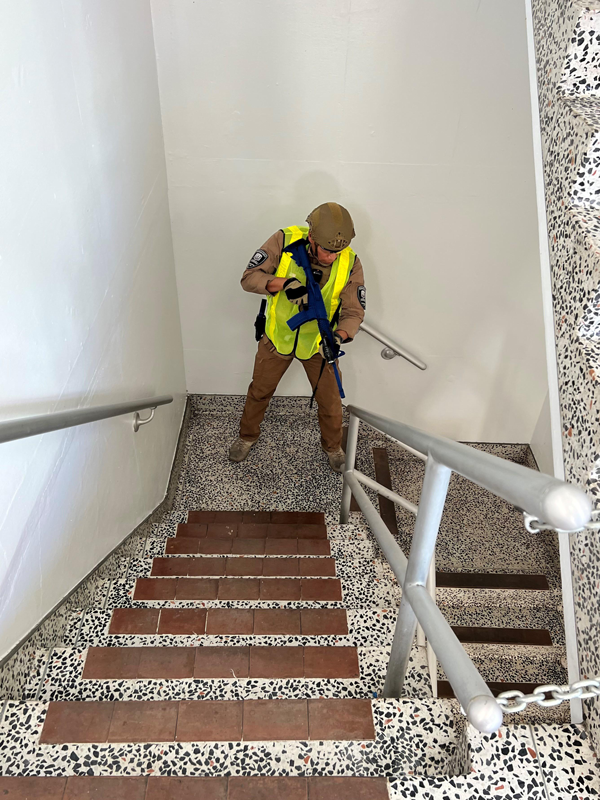 |
| A Security Response Force officer responds during the emergency exercise at Glen Canyon Dam. The exercise included a simulated terrorist attack at the dam with officers in pursuit of four suspects. Reclamation photo by Ron Anderson |
Planning for the worst — Emergency response exercise at Glen Canyon Dam
|
|
from the |
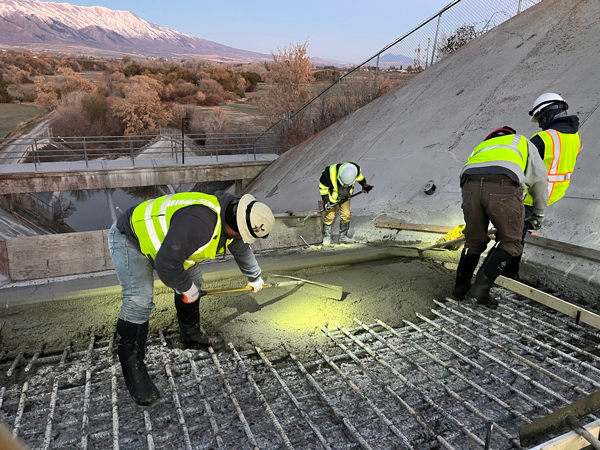 |
| An office with a view: Provo's Force Account Crew made the repairs quickly to ensure the spillway could be used if needed as early as December. Reclamation photo |
Ready for the next go-round
|
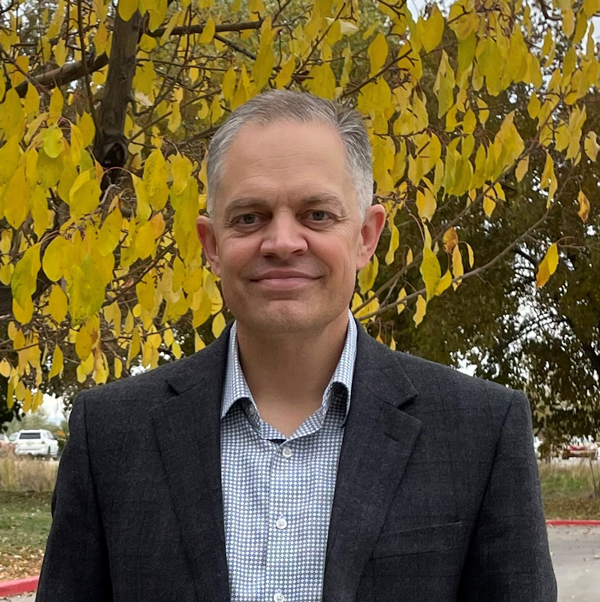 |
| Upper Colorado Basin's Provo Area Office Manager Rick Baxter. Reclamation photo |
Reclamation announces Rick Baxter as manager for Provo Area OfficeBy Amee Andreason, Upper Colorado Basin Public AffairsThe Bureau of Reclamation's Upper Colorado Basin Region has announced Rick Baxter as the new area manager for the Provo Area Office. In his new position, Baxter will oversee water projects throughout Utah, southwestern Wyoming and a very small portion of southeast Idaho. The Provo Area Office is responsible for 16 water projects that include 50 high hazard dams, 419 miles of canals, 613 miles of laterals, 57 miles of tunnels, 132 miles of pipelines, six powerplants, 14 pumping stations and 1,064,000 acres of acquired fee title, withdrawn, and easement lands.
Baxter began his Reclamation career in 2014 as a wildlife biologist in the Provo Area Office. There he progressed in management roles as the environmental group chief, Water Environmental and Lands Division manager, and his latest role was assistant area manager. In that position, Baxter oversaw the Office Engineering Division, Water Environmental and Lands Division, and Office Administrative Division. Prior to his experience with the Provo Area Office, he worked for the Bureau of Land Management and U.S. Forest Service. "I am honored for this opportunity to oversee and lead the Provo Area Office, as I go into this position with highly competent and capable staff and leadership," said Baxter. "I look forward to building strong relationships with water user associations and districts, stakeholders and the public. It is through these relationships that the Provo Area Office will be able to manage, develop and protect the critical water and power infrastructure that serves the people of Utah, southwestern Wyoming, and southeastern Idaho despite prolonged drought or wet years." "During his time as assistant area manager, I have called on Rick more than once to head initiatives that required a focused effort and results in a compressed period of time," said Pullan. "Serving as area manager will make use of his ability to quickly develop relationships of trust among those with whom he works with and to collaboratively and efficiently address issues and managed projects—all in the service of the public." Baxter has a doctorate in wildlife and wildlands ecology and master's and bachelor's degrees in wildlife and range resources — all from Brigham Young University. He was born and raised in Oregon before settling down with his family in Utah. He enjoys hunting, fishing, gardening and is also a hobby beekeeper. |
|
In case you missed it: |
|
Bipartisan Infrastructure Law: 2 Years LaterIt's been two years since President Biden signed the Bipartisan Infrastructure Law. Since then, Reclamation has selected 372 projects to receive nearly $2.8 billion in funding. This video highlights those accomplishments. |

Interior Region 7 • Upper Colorado Basin 125 South State Street, Room 8100 Salt Lake City, Utah 84138-1147 If you would like to subscribe or unsubscribe to this newsletter, please send an email with your first and last name to ucbpao@usbr.gov. |
